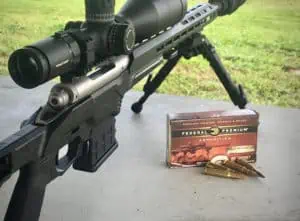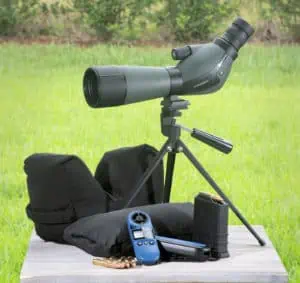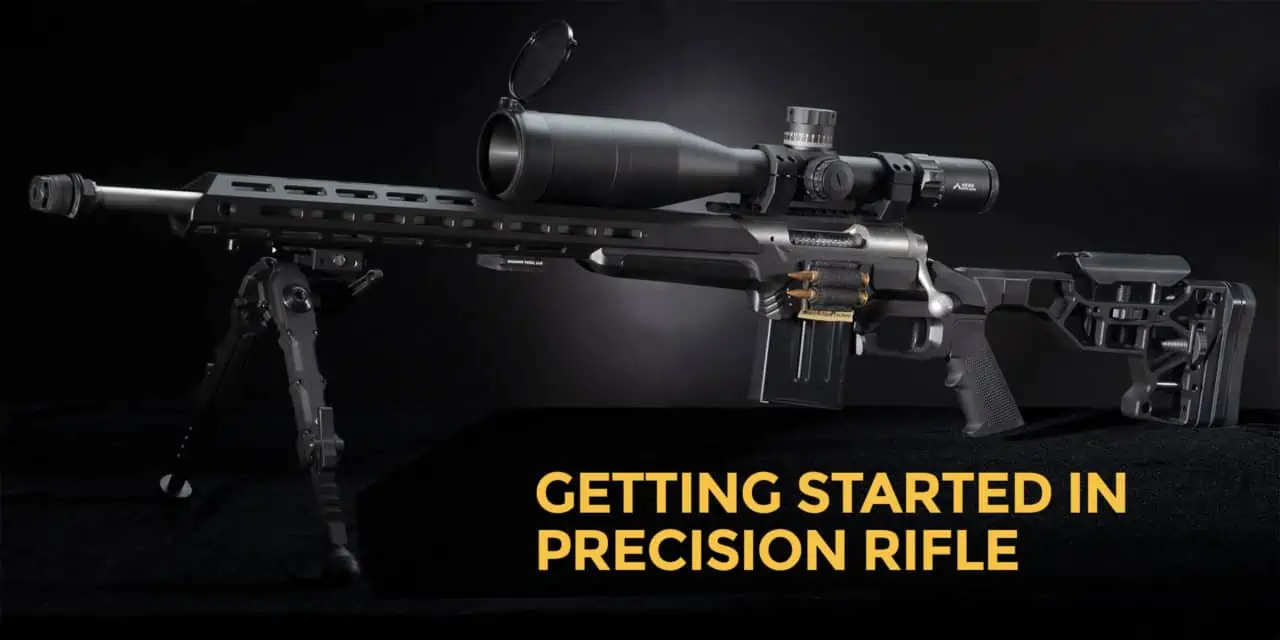Getting Started In Precision Rifle
Precision rifle shooting is a sport that exploded in popularity the past few years. More clubs are forming and barriers to entry have been lowered with the introduction of budget-priced chassis rifles like the Ruger Precision Rifle and the Savage Stealth. In addition to this, the price on quality optics has dropped significantly. Now, you can get high-quality scopes for under $500.
However, I found out there isn’t a lot of good advice to be found for people who want to start shooting precision rifle. There’s a myriad of “Top Ten Accessories Used By The Pros” content out there, but not a lot of articles about why you want to use those accessories. As such, I turned to Quentin Morgan, the owner of Ghost Five Tactical. Morgan is a former Army sniper and current law enforcement officer who is a competitive shooter in the Precision Rifle Series. I reached to get his opinion on where to start in precision rifle, such as what rifles work well for the beginning shooter, what optics a beginner should look at buying, what ammunition choices are out there and what other gear is a good choice for people looking to up their long range game.
What is precision rifle?
Precision rifle is a competitive sport where shooters engage targets at long range (100 yards on out to 1500 yards, and beyond), under the pressure of a timer.
In a typical Course of Fire the shooter engages 3-8 targets in a few minutes from a variety of awkward shooting positions. Success in this sport is based on two things: Knowing how your rifle, optic and ammunition will perform at any given distance and your ability to hit the target in unusual shooting positions. Round counts in a match (depending on your skill level) are quite low compared to practical pistol or 3 gun. 100-200 rounds of good-quality match ammunition is enough to shoot most precision rifle competitions.
Beginner’s Gear For Precision Rifle
To get started in the sport, Morgan recommends starting with the basics, a Remington 700 or Ruger Precision or Savage Arms rifle that will perform consistently and accurately.
“At first, the rifle is going to shoot better than you do,” says Morgan. “So concentrate, learn the basics of establishing a solid shooting foundation. Get good data on where your rounds are landing at different ranges, and practice shooting from unusual positions.”
Optics are a big part of the game in precision shooting, and Morgan recommends a first-focal plane scope with variable zoom range somewhere around 12-18 power.
“Over-zooming is a classic mistake that many people, even experienced shooters make,” said Morgan. “Precision rifle matches are all about acquiring a target quickly, hitting it as fast as you can, and then quickly moving on to the next target. Too much magnification on your scope makes all of that harder to accomplish. Good quality scopes for the beginner that will get you started are ones like the Vortex Optics Viper PST 4-16×50, the Primary Arms 4-14×44 Silver Series and the Sig Sauer Tango4 4-16×44.
Ammunition

The author’s choice for his .308 rifle: .308 Federal Premium 168 grain Sierra Match King rounds
Quentin has shot matches with his own handloaded ammunition, and with factory match-grade ammunition as well, and sees advantages and disadvantages to both.
“Factory ammunition just keeps getting better and better,” said Quentin,”The Hornady EL-D rounds are great for 6.5 Creedmoor shooters, and the Federal Ammo that uses Berger bullets are proven performers as well.”
6.5 Creedmoor is the caliber of choice for many competitors in precision rifle, although there is a division in the sport, Tactical Division, which is dedicated to .308, .223 and other calibers in common use with military and law enforcement.
Other Gear
There’s more to shooting a precision rifle match than just a rifle, ammo and optic. A sand-filled rear bag to stabilize the stock of the gun and provide another point of stability is an essential piece of gear. Options for this bag range from a sand-filled sock to dedicated rear bags with additional straps which come in a rainbow of camouflage and color options.
Another useful bag is an Armageddon Gear Game Changer bag (or something similar), which can be used either to create a stable shooting platform at an unstable location or to stabilize a rifle in other ways.

A spotting scope is another useful piece of gear for precision rifle, especially when gathering DOPE on your gear.
Lastly, Morgan recommends a pillow bag or something similar. A pillow bag is a large, lightweight bag designed to fill in a gap in a shooting position, such as the space between the shooter’s arm and his/her body. This will give you even more stability.
Every shooting sport has some essential skills unique to that sport and crucial to success in a competition. In practical pistol, it’s developing a stage plan and then executing that stage plan to perfection. Winning a 3-Gun match means fast shotgun: The quicker you do that, the better your chances of winning on a stage. In precision rifle, quickly setting up a stable and comfortable shooting position that minimizes the wobble of your rifle is one of the big keys to success, and learning that skill is a combination of the right gear and plenty of practice.
Practice tips
Mindset is the biggest key to success in precision rifle, Morgan said.
“I’ve seen people shoot lousy on one stage and then have that poor performance dog them for the rest of the match. Each stage is its own little mini-match, and if you convince yourself that you’re going to shoot lousy on the next stage because you shot lousy on the previous stage, you’re creating a self-fulfilling prophecy.”
Confidence in your ability is the result of practice and knowledge of your equipment, and safely practicing dry fire is a key to developing that confidence. Dry fire training aids like the DFAT optical training aid and training with a .22 or similar, smaller caliber rifle which mimics the setup of your primary rifle is a great way to learn to run your gun in unusual situations.
“Most importantly,” Quentin says, “stay off the bench and away from prone shooting positions as much as possible. The bench is good for getting initial DOPE (Data On Previous Engagements) on your rifle and ammo, but you’ll rarely see those shooting positions in an actual match.”
Precision Rifle is popular because it represents an intersection of the athleticism needed to quickly move from shooting position to shooting position, concentration and focus needed to place the shot on time and on target and the intellectual acumen needed to work out the best trajectory for any given situation. With the right combination of rifle, optics, ammo and gear, it can quickly turn into a rewarding relaxing way to enjoy a day at the range.
Start Off Right
The best way to get started in precision rifle is visit precisionrifleseries.com. The Precision Rifle Series (or PRS for short) is the dominant match organizer for precision rifle, with matches going on all across the country. In addition to this, many local ranges have “outlaw” matches that are just as fun, but are not sanctioned by the PRS. If you’re not certain that precision rifle is for you, show up at a match and watch everything that’s happening, and chances are, you’ll find people there who are willing to guide you and get you started.
Above all, relax, stay safe, and enjoy finding new ways to meet friends and have fun.


